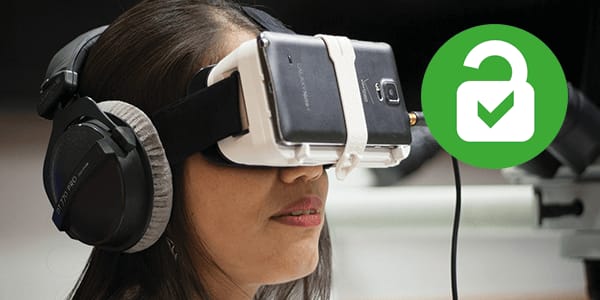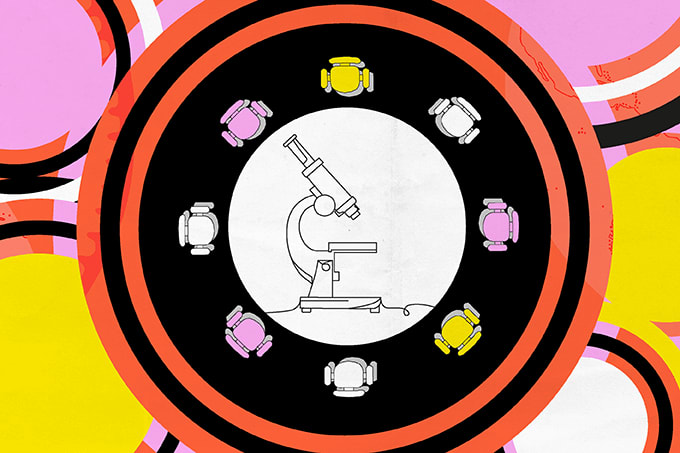Like many who pursue pathology, I fell into it and realized it was perfect for me. During my undergraduate studies, I worked in internal medicine and saw patients daily. One day, a man came in with a large testicular mass and – although I loved speaking with him and wanted to help him – what I really wanted to know was how and why the tumor had formed, what it looked like, and what treatment he would need. Now I know I wanted to understand the epidemiology, pathogenesis, and morphologic features. That’s the day I realized I was meant to do something other than see patients – but, at the time, I had no idea what pathology really was (and, unfortunately, none of the physicians I worked with did either).
While working in internal medicine, I took a gross anatomy class with cadaveric dissection. I loved the class so much that I stuck around as a teaching assistant and quickly learned that I wanted my career to involve teaching and learning about the human body. When I stumbled across the pathologists’ assistant (PA) profession after Internet searches for careers in anatomy and abnormalities, I knew I had found something that would set my world alight! It seemed like the perfect way to combine all my passions: gross anatomy, dissection, pathology, art, and teaching.
When I speak to other PAs about their route into the career, many of them have similar stories about stumbling upon the profession and realizing it was a perfect fit. It always makes me wonder how many people who would really love this job never find it. We shouldn’t have to stumble upon this wonderful profession – or any pathology specialties – and that is why, as a practicing PA and educator, I strive to promote pathology and the PA profession wherever I can.


That’s impossible to answer. And that’s exactly why I love my job so much! Even if I’m technically doing the same things, every specimen, patient, and day is different. Sometimes I spend the whole day in the gross room, grossing specimens or teaching residents, medical students, and PA students. Equally, I may be working outside the gross room – and the majority of my days are spent doing a little of both. If I had to generalize a typical day, it would go something like this: teach gross anatomy to first-year medical students, spend a few hours in the gross room either grossing or training others, teach a didactic class for PA students, and then one for my graduate and undergraduate students. Other days can include autopsy, presenting at resident conferences, and sometimes teaching for an entire day. I love that I am always doing something different, because nothing ever gets boring and I get to work with a lot of different people.
I designed the curriculum for our PA students and play some role in all of it, so I always know their exact progress and can tailor my teaching techniques to fit their current knowledge. It’s highly personalized, and the integrated curriculum teaches them what they need and want to learn. In contrast, residents typically come from a variety of medical schools and backgrounds, so it’s more difficult to gauge individual needs. Some might have worked extensively in pathology, whereas others might have no experience at all. Luckily, our residency program is relatively small, so I can get to know each of them and adapt accordingly.
Most of the time, I find it more challenging to teach a first-year pathology resident than a PA student in the gross room, because the PA students have didactic coursework specifically designed to teach them the concepts of grossing and why each section is important. Residents often don’t arrive with that knowledge, because it’s something they’re expected to learn during residency. The residents also get limited time, or their rotations are broken up into months spread throughout the year, so the lack of consistency can make it more challenging for them to learn and familiarize themselves with grossing concepts. I do my best to teach the “why” behind all of the sections and measurements and not just the “how,” because I think that leads to better patient care, whether you’re a PA or a resident. Our PA curriculum and residency education overlap significantly – and all classes and conferences are available for everyone to attend.
I would tell myself to be patient, which I sometimes find difficult because I like to take on big tasks and I get really excited about what I’m doing. I’m still learning how to be patient, especially now that I am more involved with research. I’m also bad at accepting help from others and even worse at asking for it. I am getting better – but it’s something that would have greatly benefited me years ago. You don’t have to do everything yourself!




